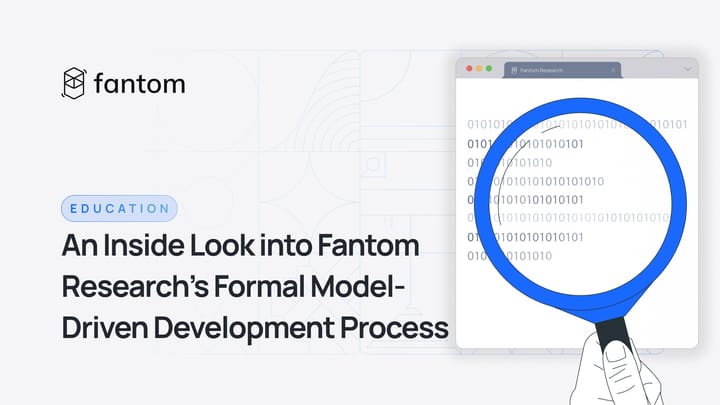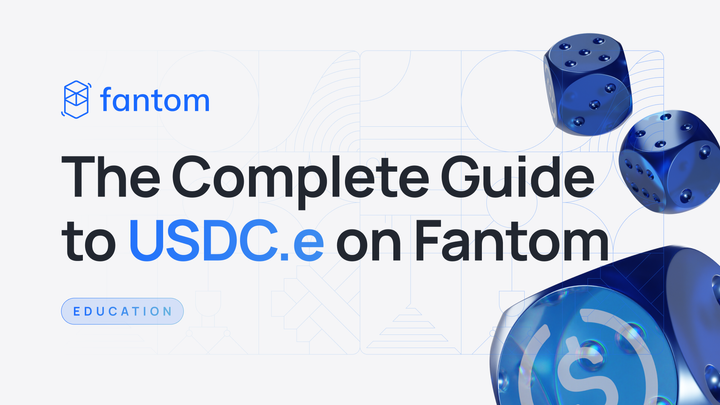How to Add Fantom Sonic Testnet RPC
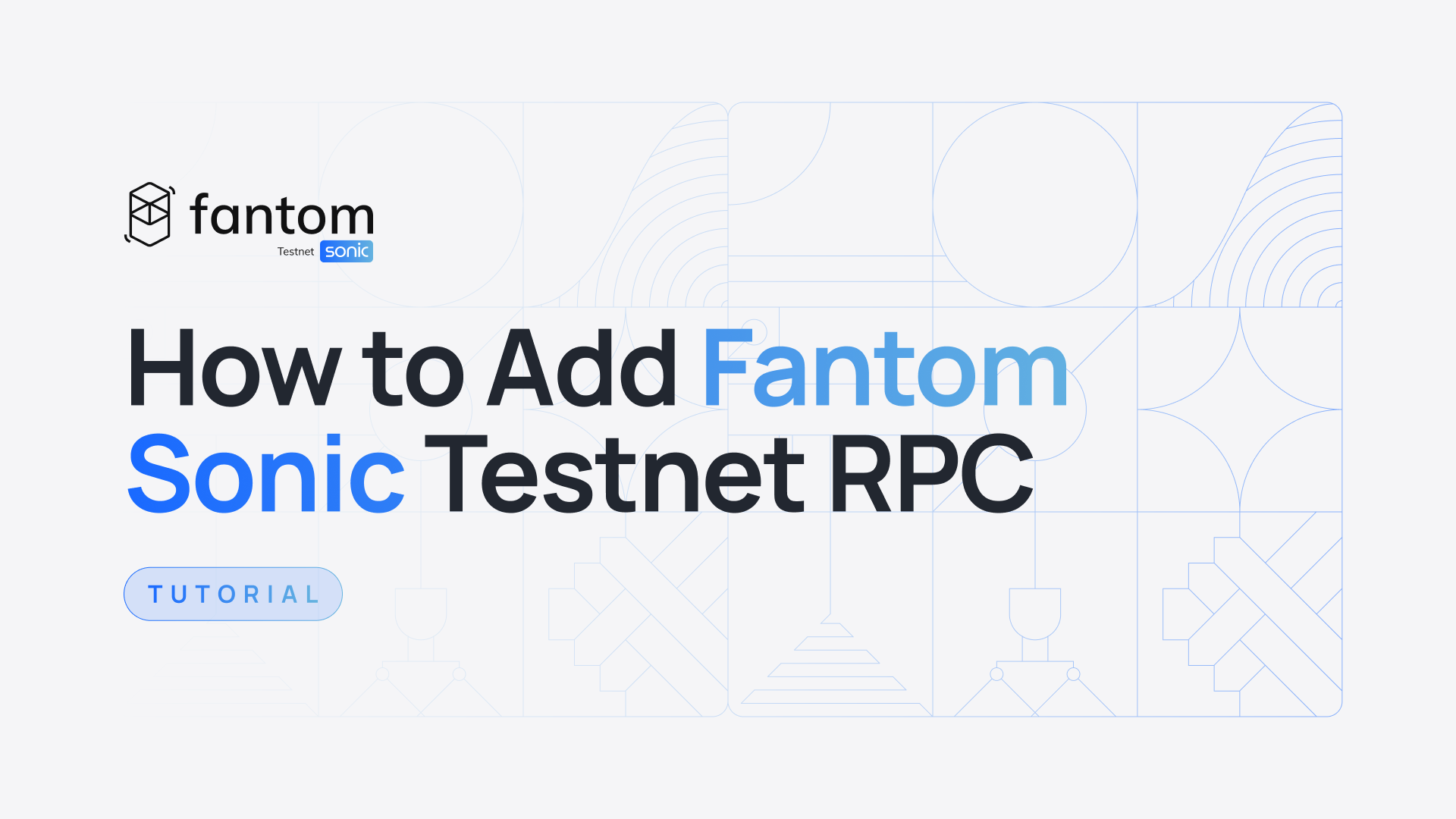
On October 24, we announced Fantom Sonic and released its testnet environment to the public. The network upgrade will scale Fantom to beyond 2,000 transactions per second with a one-second finality while reducing storage requirements by up to 90%.
The Sonic open testnet allows users to interact with Sonic by submitting transactions and performing swaps to experience its incredible performance directly. Before using the open testnet, you must add the network to your preferred wallet, as demonstrated in this tutorial.
— Add RPC automatically
— Add RPC manually
— MetaMask
— Frame
— Other wallets
— Frequently asked questions
Add RPC automatically
The Sonic open testnet dashboard features a button to add the network to your preferred wallet automatically. We use MetaMask for this part of the tutorial, but any wallet that can mimic or inject as MetaMask should work.
- Connect wallet
- Go to the Sonic open testnet dashboard
- In the top-right corner, click Connect
- Choose your desired wallet account and connect
- Go to the account page, unless automatically redirected
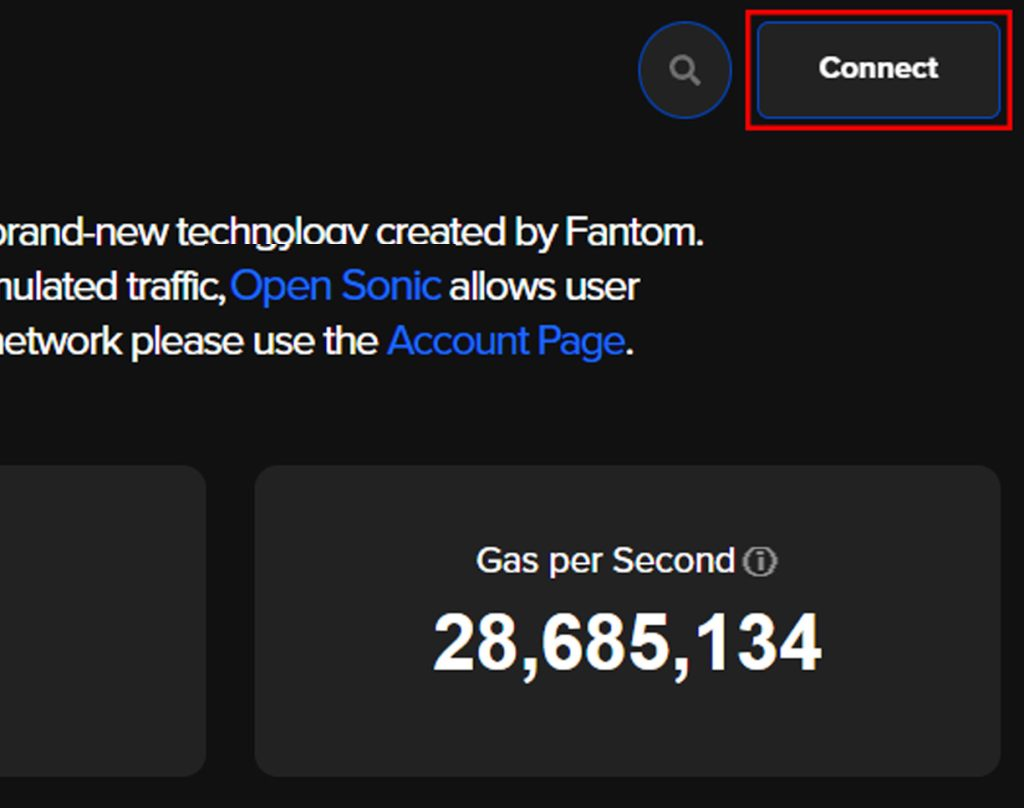
- Configure network
- In the Network section, click Add to MetaMask
- Ensure the network details in your wallet match those on the web page
- Approve the action in your wallet and click Switch network when prompted
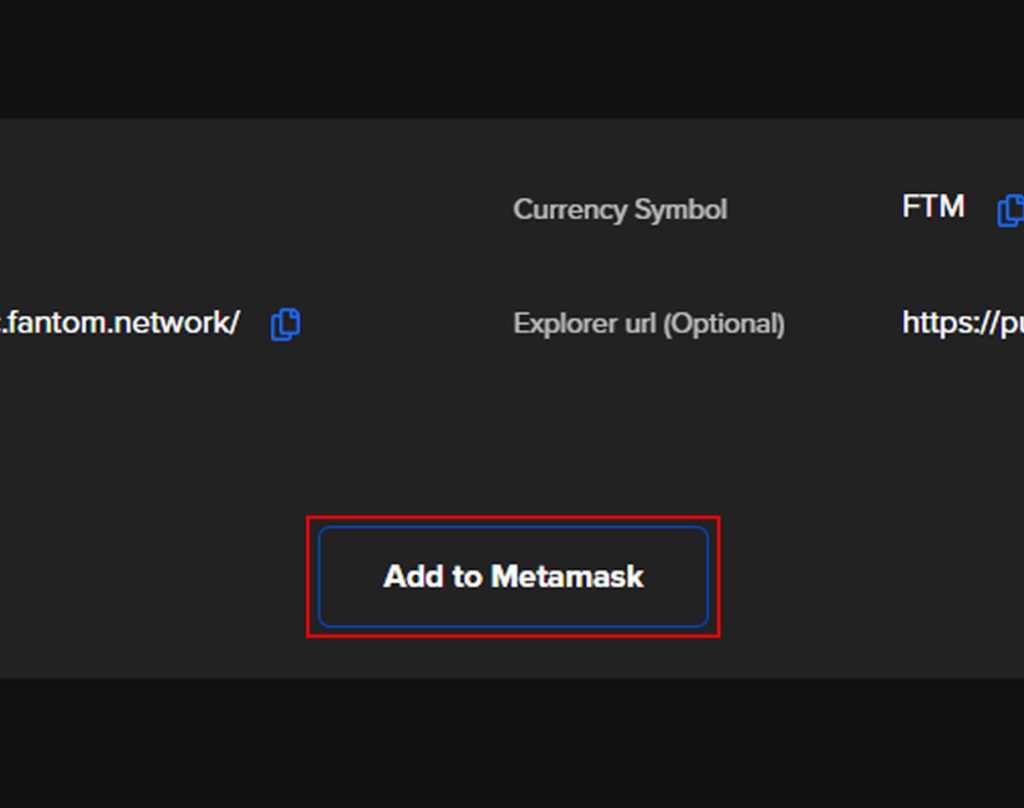
Once you are connected to the Sonic open testnet, you can request various testnet tokens through the Faucet and experience the performance of Sonic with the Sonic Trade feature.
If these steps do not work for you, follow the next part of the tutorial to add the network to your wallet manually.
Add RPC manually
Follow these steps to add the Sonic open testnet network to your wallet manually.
MetaMask
- Connect wallet
- Go to the Sonic open testnet dashboard
- In the top-right corner, click Connect
- Choose your desired wallet account and connect
- Go to the account page, unless automatically redirected

- Add network
- In MetaMask, click on the network icon in the top-left corner
- At the bottom, click Add network, after which you will be redirected to MetaMask’s browser interface
- At the bottom of the page, click Add a network manually
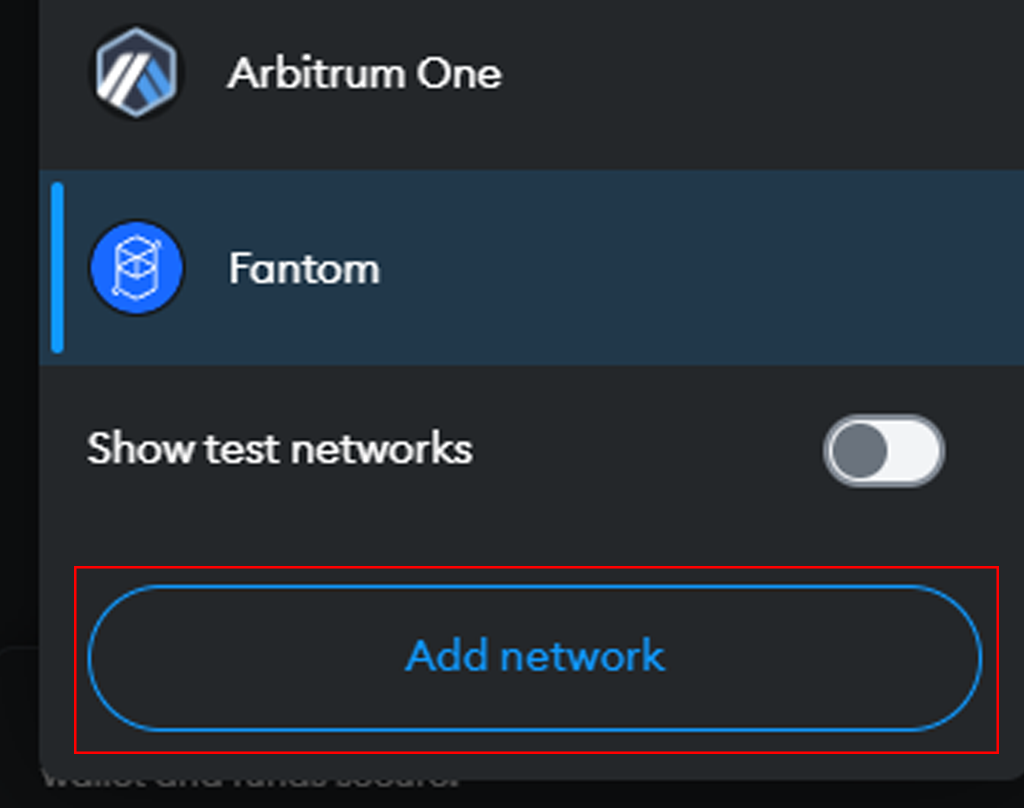
- Enter details
- Enter the details from the Network section of the open testnet account page into the boxes
- Once you ensure the details are correctly entered, click Save
- Click Switch to Fantom Sonic Open
- Head back to the open testnet dashboard to begin using Sonic.

Frame
- Connect wallet
- Go to the Sonic open testnet dashboard
- In the top-right corner, click Connect
- Choose your desired wallet account and connect
- Go to the account page, unless automatically redirected

- Add network
- In Frame, click on the menu icon in the top-left corner
- Click Chains and then Add New Chain at the bottom
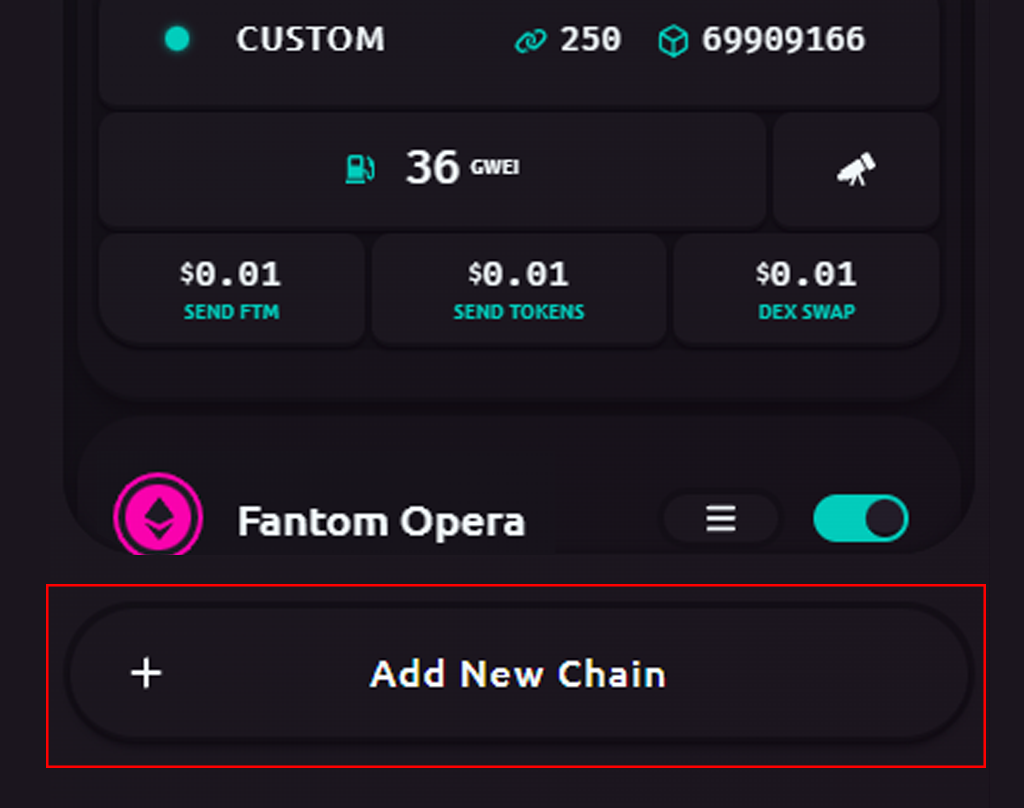
- Enter details
- Using the details from the Network section of the open testnet account page, enter the details into the boxes
- Type FTM for both Native Symbol and Native Currency Name
- Once you ensure the details are correctly entered, click Add Chain

- Switch network
- Click on the Frame extension icon in your browser
- Click Fantom Sonic Open
- Head back to the open testnet dashboard to begin using Sonic.
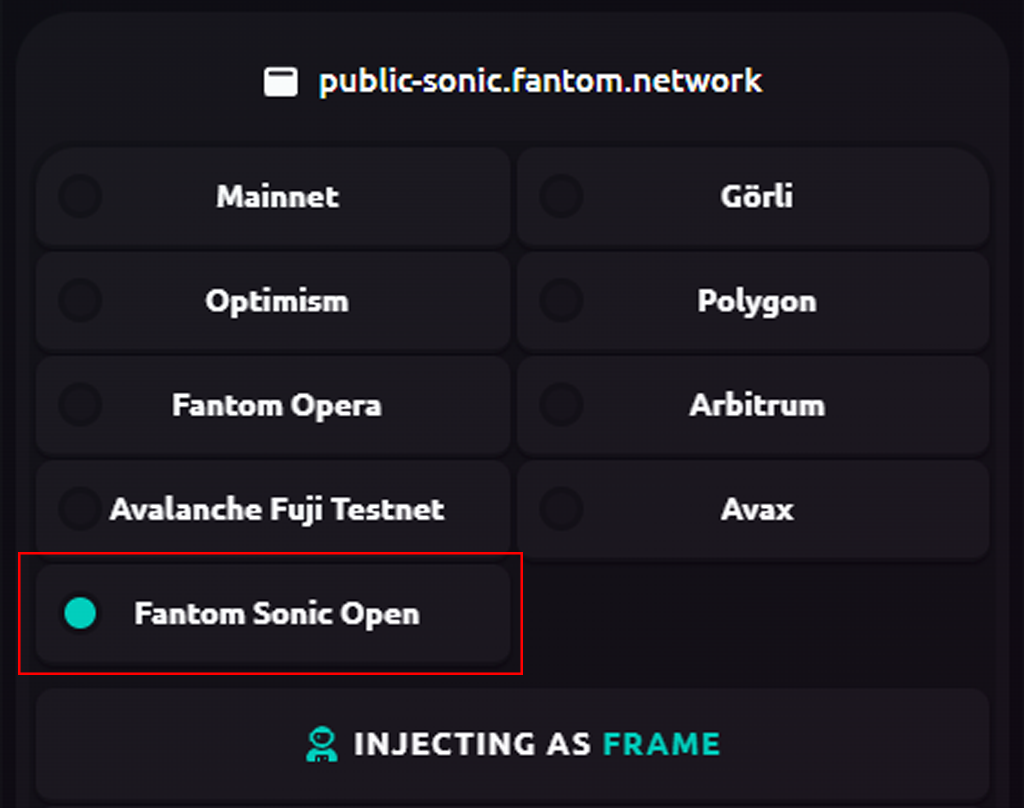
Other wallets
For wallets other than MetaMask and Frame, the process is similar to the tutorial above. Simply head to the section in your preferred wallet that allows you to add a custom network and enter the details from the Network section of the Sonic open testnet dashboard.
Having trouble? Reach out to us on our social media channels where we are ready to assist.
Frequently asked questions
The launch of Sonic comprises three main components that scale Fantom to new heights:
● A new virtual machine, the Fantom Virtual Machine (FVM), which increases our transaction throughput significantly while maintaining ultra-short finality.
● A new database storage, Carmen, which reduces storage requirements by up to 90%, providing greater cost efficiency for validators and accelerating the Foundation’s ability to deploy archive nodes from weeks to approximately 36 hours.
● An optimized Lachesis consensus mechanism, which brings a vastly improved transaction pool.
Fantom Sonic is in its testnet stage at the moment and will roll out as a mainnet to replace Fantom Opera in spring 2024. Currently, Sonic offers two different testnets: the closed testnet aims to showcase the maximum theoretical limits of Sonic, whereas the open testnet is interactive, allowing any user to experience Sonic directly.
Most importantly, this new virtual machine allows Fantom validators to execute smart contracts more efficiently.
The closed testnet is viewable only and aims to showcase the maximum theoretical limits of Sonic, whereas the open testnet is interactive, allowing any user to experience Sonic directly.
However, there may be even more significant performance gains with further testing that may require a hard fork in the future, but the current plan is not to hard fork Fantom Opera.


